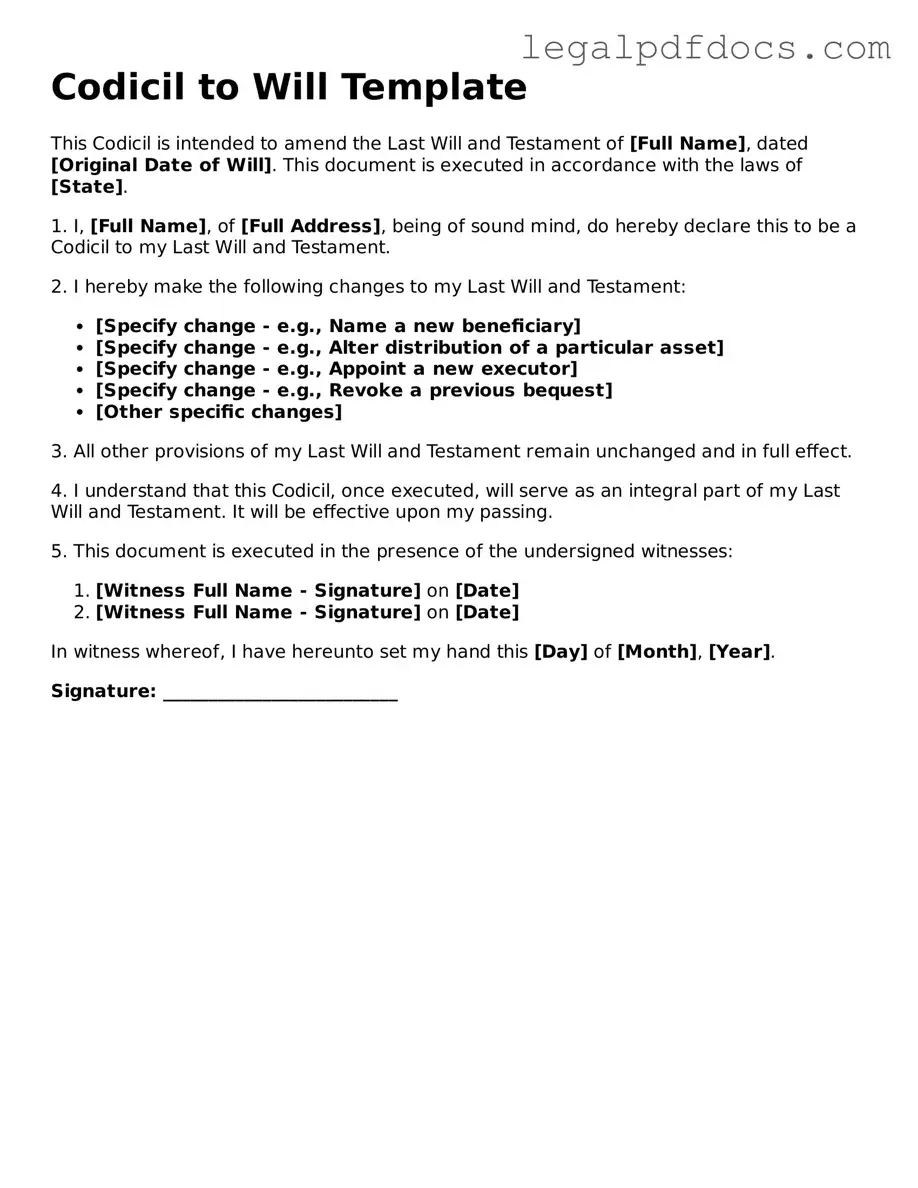Codicil to Will Template
A Codicil to Will form is a legal document that allows you to make amendments or additions to your existing will without having to create an entirely new document. This form ensures that your wishes are clearly outlined and legally recognized, providing flexibility as your circumstances or intentions change. If you need to update your will, consider filling out the Codicil to Will form by clicking the button below.
Open Codicil to Will Editor Here
